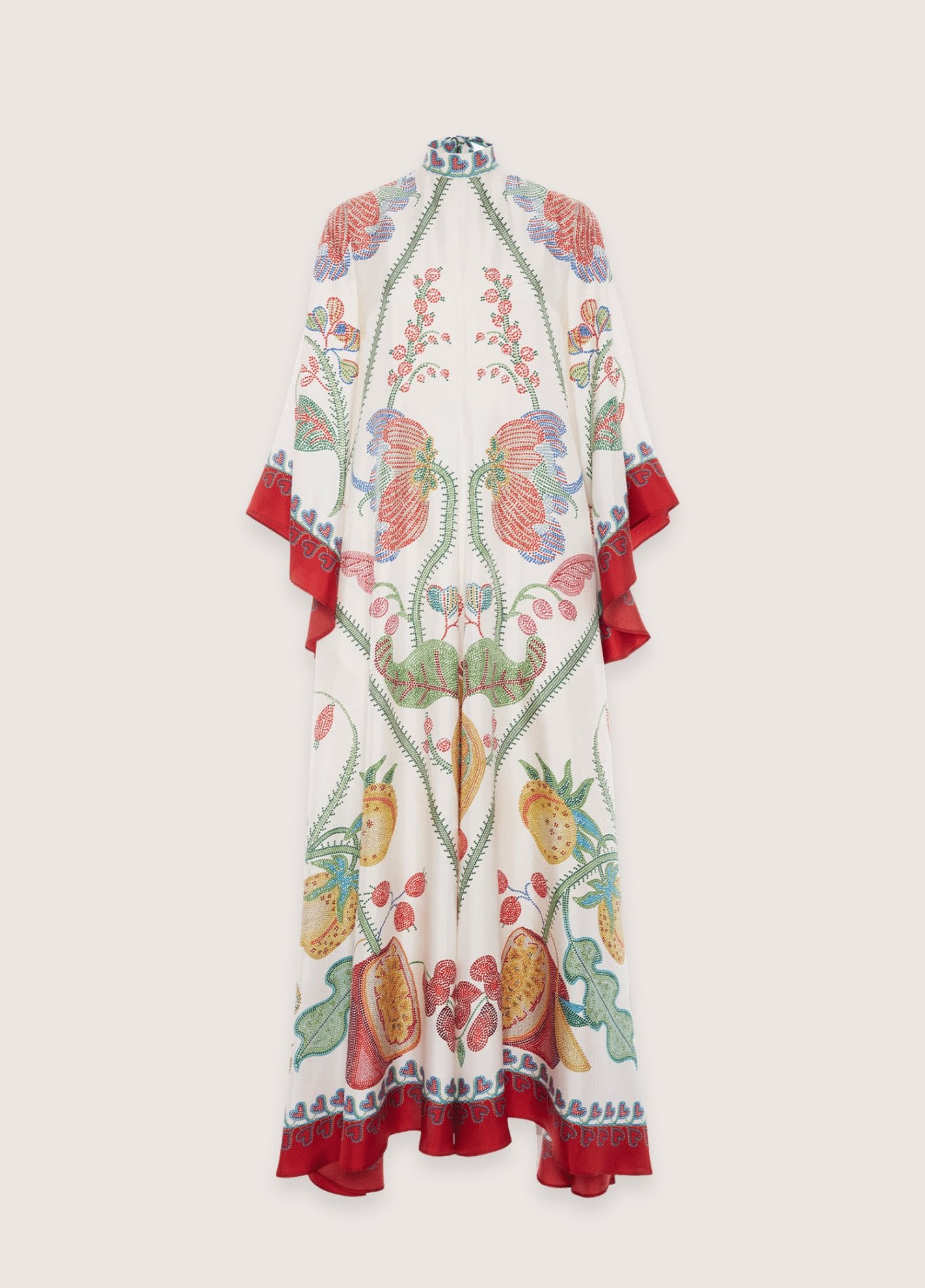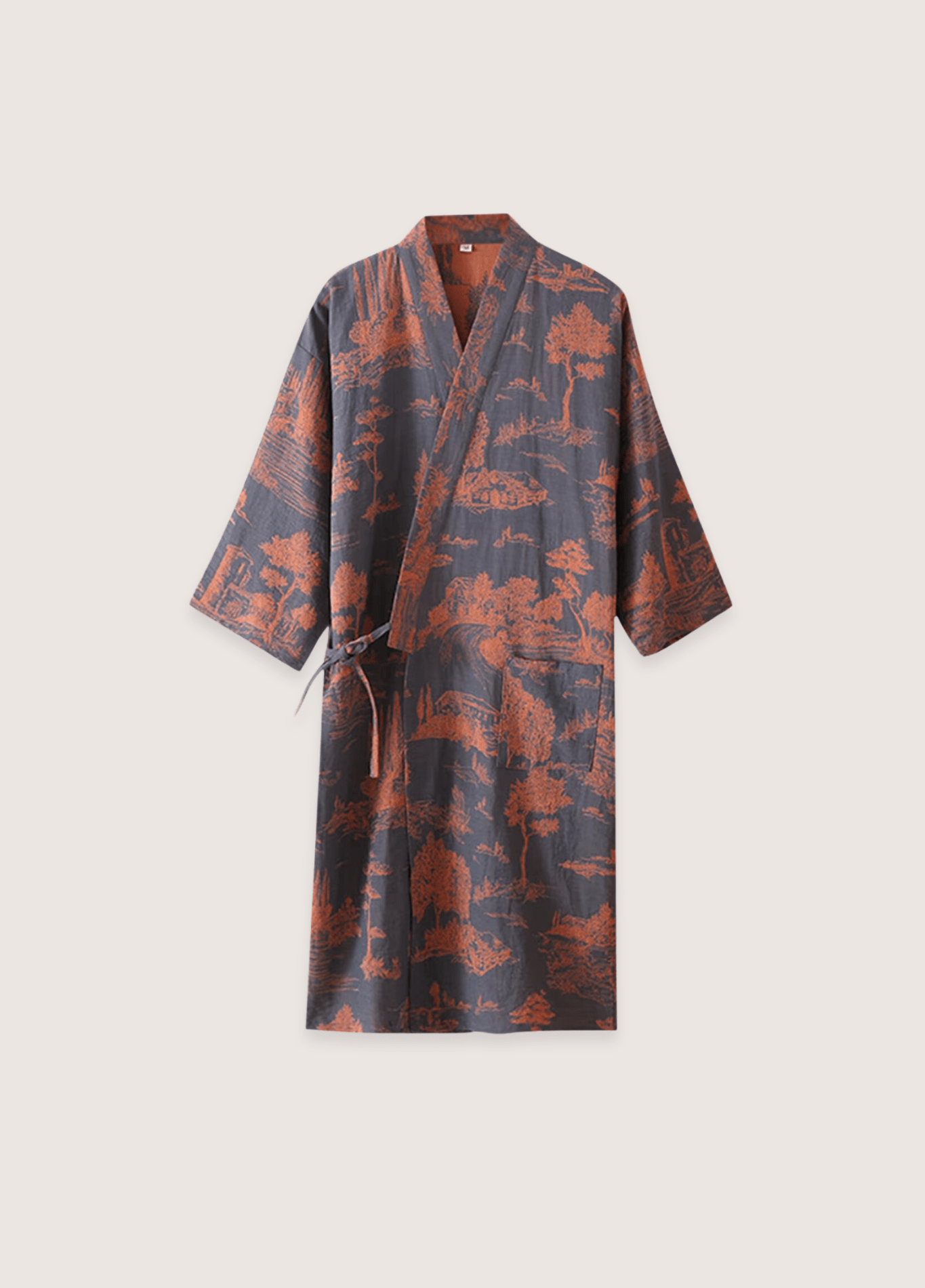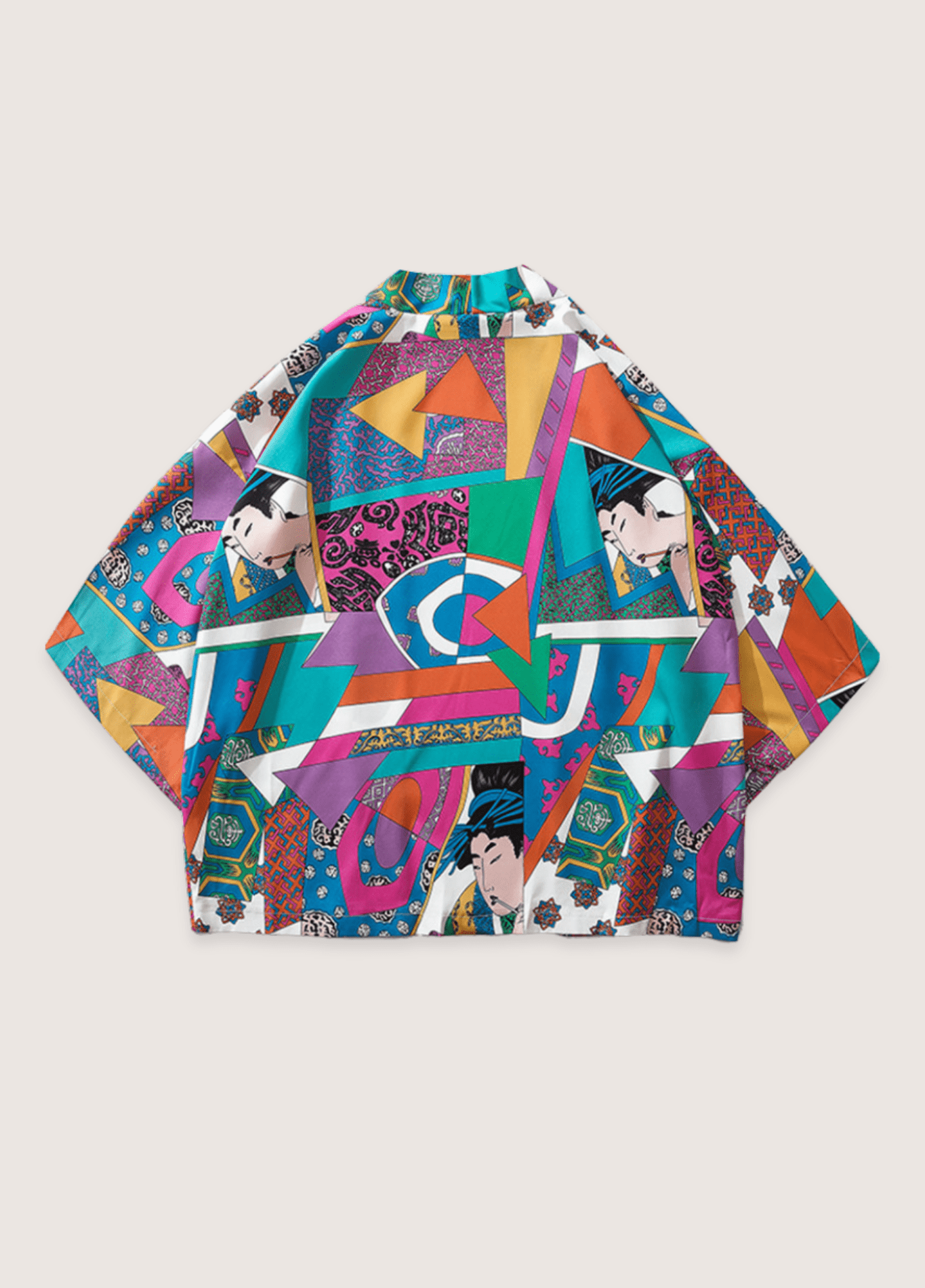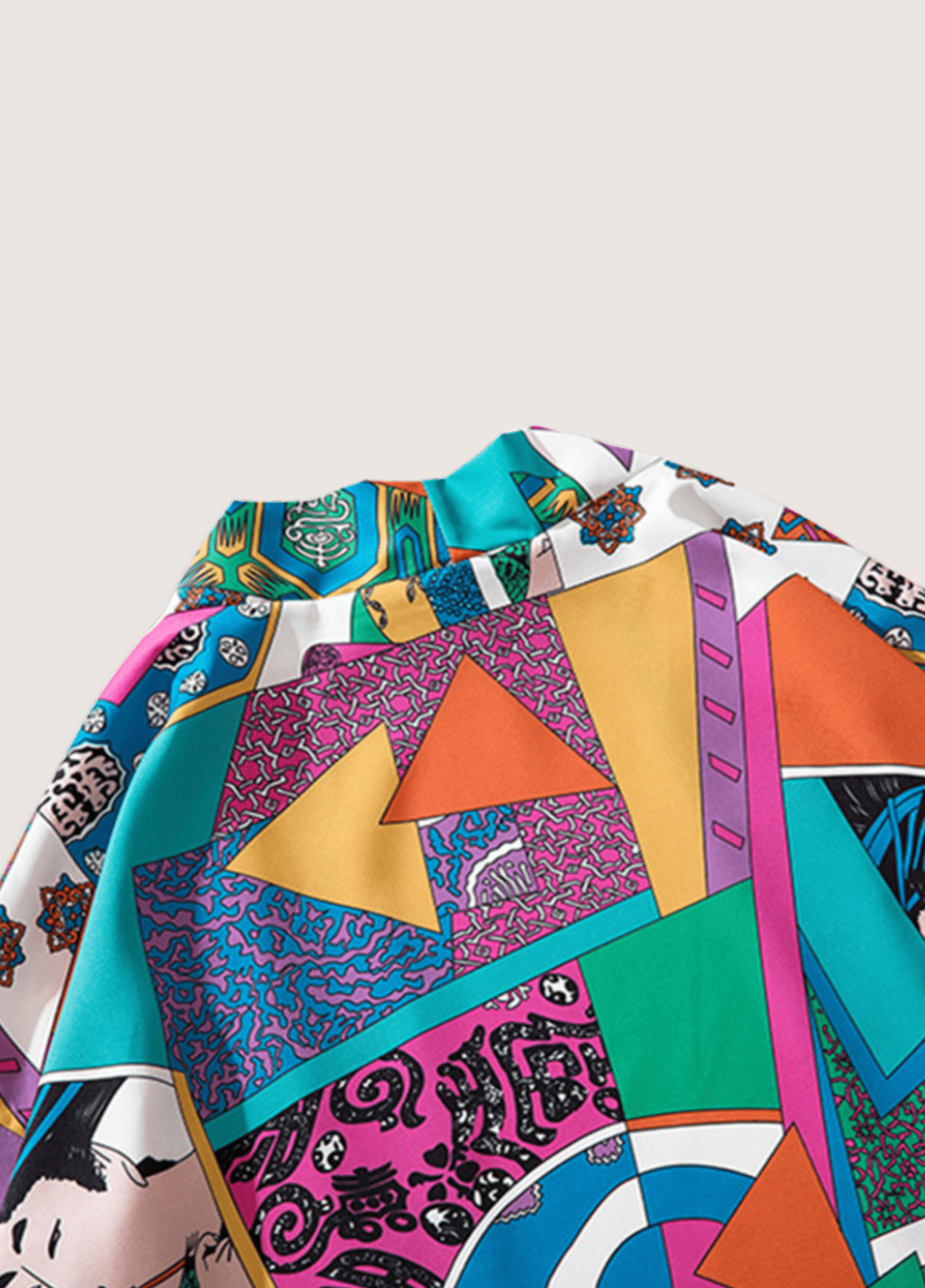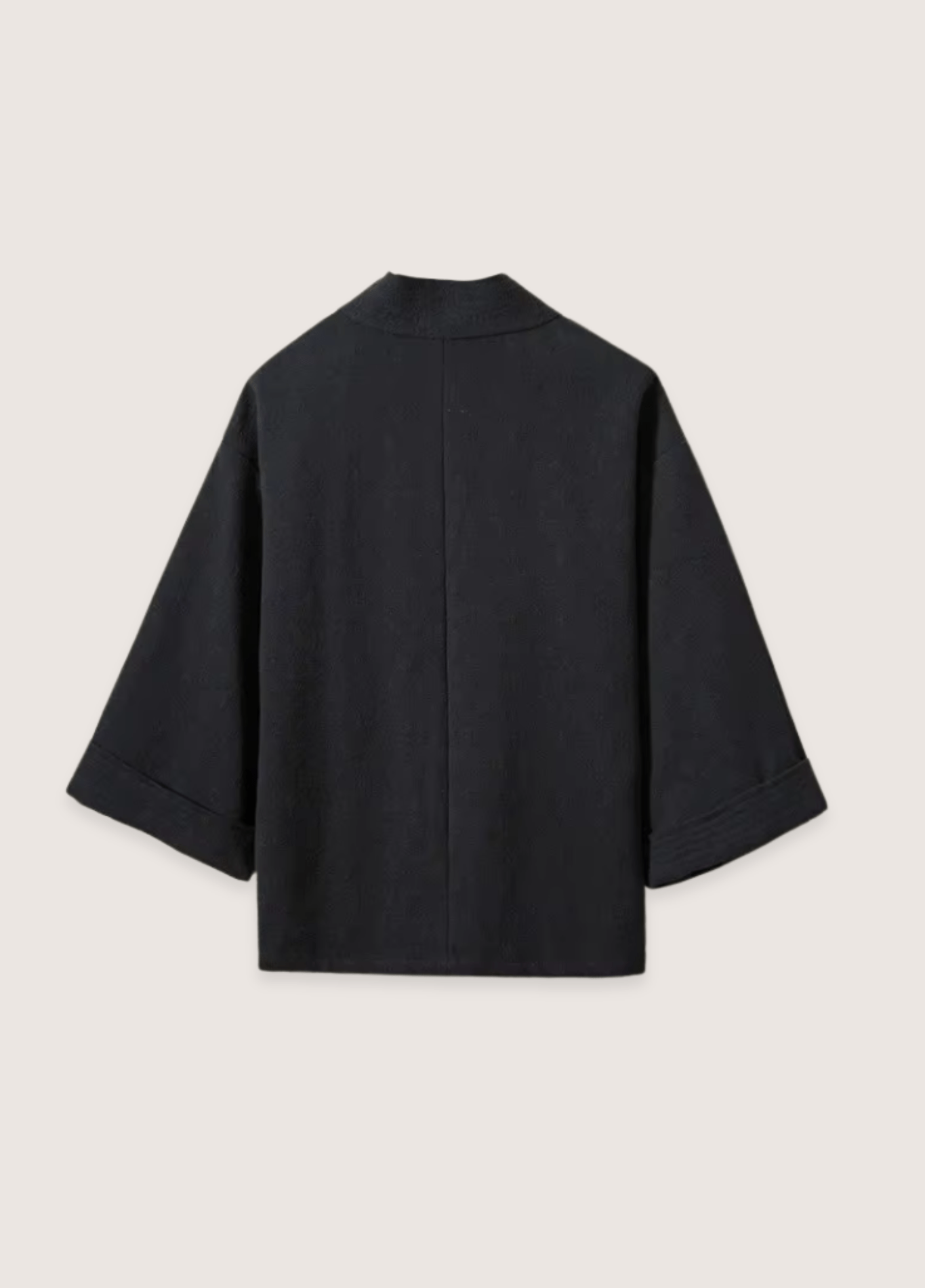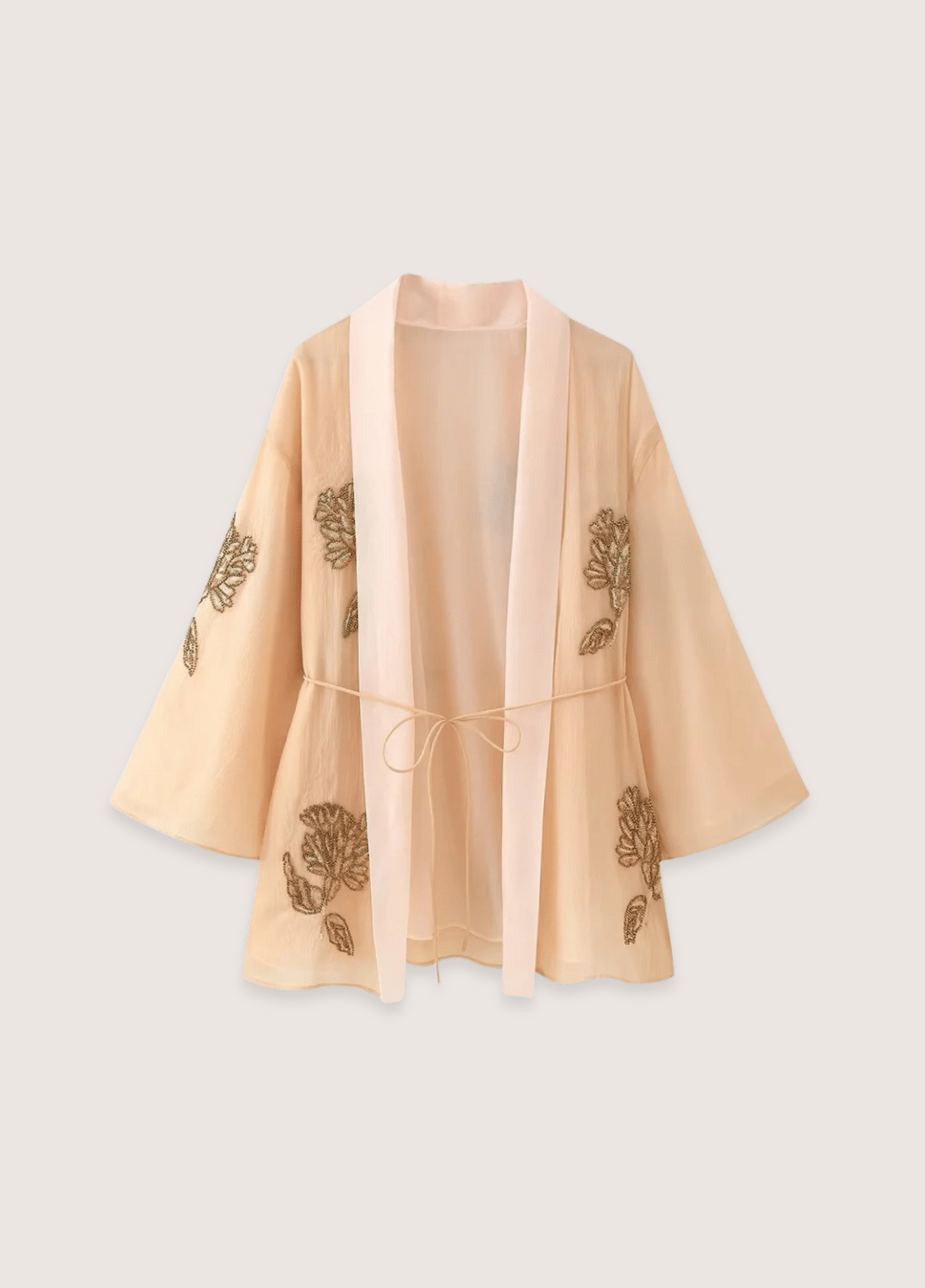An ambitious production that will mark the year 2024.
The Shōgun series represents one of FX’s most ambitious projects, with production taking over a decade to develop. Filming took place in Vancouver , British Columbia, from September 22, 2021 to June 30, 2022, two months longer than originally planned. Hiroyuki Sanada , who stars in the lead role and also serves as a producer, stressed the importance of authenticity in the production:
"After twenty years in Hollywood, I'm a producer. If something is wrong, people can't focus on the drama. We had to be authentic."
The filming involved around 340 crew members, demonstrating the scale of the project.
Summary:
Where to watch the Shōgun series?
When is the Shōgun series coming out?
Where does the Shōgun series take place?
How many episodes does Shōgun have?
What does shogun mean?
A story inspired by authentic historical facts
Who stars in the Shogun series? An exceptional cast between East and West
Between fiction and historical reality: the major themes
The Cultural Impact of Shogun
Where to watch the Shōgun series?
In France, Shōgun is available exclusively on Disney+ . In the United States, the series airs on FX and Hulu. Interestingly, an English dubbed version is also available on Hulu for American audiences. The series also benefits from a complementary podcast hosted by Emily Yoshida, which accompanies each episode.
When is the Shōgun series coming out?
Shōgun premiered on February 27, 2024, with the first two episodes airing . The series adopts a weekly broadcast format, with a new episode each week. Following its resounding success, a second and third season were officially announced in May 2024, with the entire writers expected to reunite in mid-2024.
Where does the Shōgun series take place?
The story of Shōgun is set in Japan in the year 1600, a crucial historical period known as the Sengoku period (1467-1615). The action begins when the Taikō has just died, leaving power divided between five regents who protect his heir at Osaka Castle. The series plunges us into a Japan in the midst of civil war, where the various feudal lords, called daimyō, are fighting for control of the country.
Although the story is set in Japan, filming for Shōgun took place entirely in Canada, primarily in British Columbia . Principal photography took place in several cities and regions:
- Vancouver
- Port Moody
- Coquitlam
- Ucluelet on Vancouver Island
According to Hiroyuki Sanada, who spoke to Yahoo Canada,
"Vancouver is a perfect place to shoot a samurai drama because they had a big, beautiful studio, and just a 30-minute drive from the studio, they have everything: forest, river, beach, parks, mountains."
Cosmo Jarvis also highlighted the excellence of the Canadian technical team, stating that
"Our Canadian team demonstrated technical skill that I have never seen in my life."
An interesting fact about the filming: a Japanese white pine used on set was donated and planted after filming at the Port Moody City Hall, leaving a lasting trace of the production. Some post-production visual effects were done in Ireland.
It is worth noting that the production treated the Japanese extras particularly well, paying them 50,000 yen per day, which is significantly higher than the usual standards for a Japanese production where they are paid between zero and 5,000 yen per day.
How many episodes does Shōgun have?
The first season of Shōgun consists of 10 episodes, each ranging from 53 to 70 minutes in length . The series was originally conceived as a miniseries, but its success led to the development of a second and third season. Each episode benefits from careful direction and high-quality production.
What does shogun mean?
The term "shōgun" (将軍 in Japanese) historically refers to the hereditary military ruler of Japan from 1192 to 1867. This title, which literally means "general who subdues barbarians" ( seii taishōgun ) , was originally given to military commanders in charge of imperial campaigns against the Ezo tribes of northern Japan in the 8th and 9th centuries. Although legally under the control of the emperor, the shogun held the effective military power of the country, with the emperor remaining in his palace in Kyoto primarily as a symbol of sovereignty.
 Samurai Shogun
Samurai Shogun
Budget and production
The production of Shōgun represents one of FX's largest investments to date. The series required a considerable budget, as evidenced by the airing of a commercial during Super Bowl LVIII on February 11, 2024, for which FX spent approximately $7 million. Development of the series went through several phases, initially beginning in 2018 with a straight-to-series order from FX. Production was later delayed as the network felt the production was not "well-rounded enough". A single day of filming was completed in 2019 solely for FX to retain the rights to the property while the series was reworked. In January 2020, after original writer Ronan Bennett became unavailable, the project restarted with new writer and executive producer Justin Marks and supervising producer Rachel Kondo. The writing team also included co-executive producer Shannon Goss, consulting producer Matt Lambert, script editor Maegan Houang and screenwriter Emily Yoshida.
Critical reception
Shōgun has received overwhelming critical acclaim worldwide. On review aggregator website Rotten Tomatoes, 99% of 133 critics have given the series a positive review, with an average score of 8.7/10. The site's critical consensus states:
“Visually sumptuous and enriched with cultural truth, Shōgun is an epic adaptation that surpasses the original.”
On Metacritic, the series has a weighted average score of 85 out of 100 based on 39 critics, indicating "universal acclaim".
Critics have particularly praised:
- The outstanding performance of the main cast
- The quality of the battle sequences
- Respect for the source material
- The emphasis on Japanese characters compared to the 1980 adaptation
Viewing data confirms this critical success:
- The series became the most-watched streaming program on all platforms between February 26 and March 3, 2024
- It reached 9 million views on Hulu, Disney+ and Star+ in its first six days of release.
- In Japan, the series has also received praise, including from video game designer Hideo Kojima , who compared it to "a Game of Thrones set in 17th-century Japan."
The series also received numerous awards and became the first Japanese-language series to win an Emmy Award for Outstanding Drama Series.
A story inspired by authentic historical facts
Beyond its entertaining aspect, Shōgun is deeply rooted in the historical reality of feudal Japan. Adapted from James Clavell's 1975 novel, the series is set in 1600, during the Sengoku period (1467-1615), a time marked by major upheavals in Japanese history. The story is directly inspired by proven historical events, including the arrival of William Adams, the first Englishman to reach Japan, on whom the character of John Blackthorne is based. The series accurately depicts the political and religious tensions of the time, as Portugal and Spain attempted to expand their influence in Asia through trade and religious conversion. Creators Rachel Kondo and Justin Marks paid particular attention to historical authenticity, consulting numerous experts to ensure faithful cultural representations, costumes, and traditions . This attention to detail is also reflected in the depiction of power dynamics between the various feudal lords and in the illustration of early trade relations between Japan and the West. The series highlights a pivotal period when Japan, while opening itself to foreign influences, sought to preserve its cultural identity and political independence .
 Map of Japan from 1707 showing the territories of the different daimyos, Ieyasu and William Adams bottom right Public domain via Wikimedia Commons
Map of Japan from 1707 showing the territories of the different daimyos, Ieyasu and William Adams bottom right Public domain via Wikimedia Commons
The historical context of feudal Japan
The story of Shōgun takes place in a crucial period of Japanese history, the Sengoku period (1467–1615), characterized by incessant civil wars. In 1600, Japan was in a phase of great instability after two centuries of conflict. International relations were also complex: Protestant England had just defended the throne of Elizabeth I against the invasion of the Spanish Armada in 1588, while Spain and Portugal had divided the oceanic domains beyond Europe between their vast empires with the Treaty of Tordesillas in 1494. Portugal, having discovered Japan in 1543 , had begun to trade in Western goods, including matchlock firearms, while spreading the Catholic faith through the introduction of Jesuit missionaries.
The main characters and their real inspirations
The characters in the series are based on real historical figures:
- John Blackthorne (played by Cosmo Jarvis) is based on William Adams (1564–1620), the first Englishman to reach Japan . Adams remained in Japan for the rest of his life, raising a Japanese family there and becoming a valuable advisor to the shogunate .
- Lord Yoshii Toranaga (portrayed by Hiroyuki Sanada) is based on Tokugawa Ieyasu (1543–1616), a feudal lord who later became the military ruler of Japan and the founder of the Tokugawa shogunate .
- Toda Mariko (played by Anna Sawai) is based on Hosokawa Gracia (1563-1600), a Japanese Christian noblewoman who played a crucial role in the Tokugawa War .

Portrait of Tokugawa Leyasu Public domain via Wikimedia Commons
The Importance of Samurai and the Code of Honor
The series highlights the samurai class and their strict moral code (Bushido). The samurai followed traditions from several religious influences:
- From Buddhism they learned not to fear death, considering the self as an illusion
- From Shintoism they inherited the veneration of ancestors, instilling in them a deep sense of loyalty.
- From Confucianism they acquired the rudiments of behavior in a strictly hierarchical society.
A particularly prominent aspect of this code of honor is the practice of seppuku , ritual suicide by disembowelment. As historian Morgan Pitelka explains, while spectacular in the series, seppuku was not that common, occurring mainly among the elite samurai who made up only 6-7% of the population. However, among this small group, the practice was real and took place as depicted in the series. Seppuku was considered preferable to execution because it allowed the samurai to maintain control over their death, thus respecting their position and honor.
Who stars in the Shogun series? An exceptional cast between East and West
The Shōgun series is distinguished by a predominantly Japanese cast, reflecting the creators' desire to maintain cultural authenticity. The production features internationally renowned actors alongside emerging talents, creating a unique synergy between East and West.
The main actors
The main cast brings together exceptional talents:
- Hiroyuki Sanada stars as Lord Yoshii Toranaga . A world-renowned Japanese actor and martial artist, he is known for his roles in John Wick: Chapter 4, Bullet Train, Mortal Kombat, and Army of the Dead. His involvement in the series is not limited to his acting role, as he also serves as a producer, ensuring the cultural authenticity of the project.
- Cosmo Jarvis stars as John Blackthorne . The actor, previously seen in Peaky Blinders and Raised by Wolves, brings a particular intensity to the role of the English navigator lost in a world he doesn't understand.
- Anna Sawai brings to life the character of Toda Mariko . The actress, recently seen in the Apple TV+ series Monarch: Legacy of Monsters, plays a high-born woman who serves as a translator between Toranaga and Blackthorne.
Cultural authenticity
Cultural authenticity is one of the series' major strengths. The majority of the dialogue is in Japanese, with subtitles, a bold move for an American production. Hiroyuki Sanada, as producer, particularly insisted on this aspect:
"If something is wrong, people can't focus on the drama. We needed to be authentic."
This approach is also reflected in the composition of the production team, which includes many Japanese professionals both in front of and behind the camera.
Costumes and sets
The production paid meticulous attention to costumes and sets to faithfully recreate feudal Japan in the 1600s. Filming, which took place primarily in British Columbia, benefited from meticulously constructed sets. The costumes, including kimonos and samurai armor, were created with remarkable attention to historical detail . Carlos Rosario, Carole Griffin and their team received recognition for their work on period costumes, winning an Emmy Award for Outstanding Period Costumes for the episode "Ladies of the Willow World."
The art direction was also praised for its faithful recreation of period Japanese castles, villages and interiors. Helen Jarvis, Chris Beach and their team created sets that truly transport viewers to 17th-century Japan, a work that earned them an Emmy Award for production design.
Learn more about our women's kimonos
Between fiction and historical reality: the major themes
The Shōgun series shines in its ability to skillfully interweave narrative fiction with authentic historical events, providing a fascinating dive into the complexities of feudal Japan.
The confrontation of cultures
The series explores the collision between East and West through the arrival of John Blackthorne in Japan. This encounter reflects the real historical tensions of the time. The Portuguese, the first Europeans to discover Japan in 1543 , had already established their presence through trade and religion. As Princeton University professor Thomas D. Conlan explains, the Portuguese and the Spanish had two main goals: to convert Japan to Christianity and, eventually, to conquer it by converting the high-ranking lords. However, they had to tread carefully because
"Militarily, the Portuguese simply could not match Japanese power."
Blackthorne's hostility toward the Portuguese and their mutual animosity constitute one of the most historically accurate aspects of this story. This rivalry was not simply religious, as historian Morgan Pitelka explains:
"This is the moment when capitalism begins. The corporations formed through these explorations of the world - the Dutch and British East India Companies - are the first capitalist corporations."
 The Edo period depiction of the battle of Sekigahara in October 1600 Public domain via Wikimedia Commons
The Edo period depiction of the battle of Sekigahara in October 1600 Public domain via Wikimedia Commons
Political and religious issues
The series highlights the complex political and religious machinations of the time. Japan was divided between different factions, with Portuguese Catholic missionaries exerting increasing influence. Historical records reveal that the Portuguese did indeed convert thousands of Japanese, creating tensions with traditional power. The series shows how religion became a tool of political power, with conversions to Christianity being seen as a form of cultural colonization.
Religious tensions reached their historical peak after the Shimabara Rebellion in the 1630s, leading to the banning of Portuguese trade in Japan. This historical reality is subtly anticipated in the series' narrative, as Japanese authorities begin to perceive the threat posed by growing Christian influence.
Japanese traditions represented
The series places a central place on Japanese traditions, particularly through the representation of bushido , the samurai code of honor. The practice of seppuku , while spectacular in the series, is depicted with surprising historical accuracy. As historian Morgan Pitelka points out, while seppuku was not as common as the series might suggest, it was nonetheless a reality for the samurai elite, who represented only 6 to 7% of the population.
The series also accurately depicts the rigid hierarchical structure of Japanese society and the absolute importance of loyalty to one's lord. The daimyo system and their relationship with their vassals are accurately depicted, reflecting the complexity of Japanese feudal relationships. The series shows how this strict social structure paradoxically protected Japan from European colonization , with Japanese lords maintaining absolute control over their territories and subjects.
 19th century illustration of Adams meeting the various Japanese daimyo Public domain via Wikimedia Commons
19th century illustration of Adams meeting the various Japanese daimyo Public domain via Wikimedia Commons
Learn more about our men's kimonos
The Cultural Impact of Shogun
The 2024 adaptation of Shōgun represents a major turning point in the representation of Japanese culture on Western television. The series not only broke ratings records, but also set new standards for cultural authenticity in international productions. With 9 million views in its first six days of airing on Hulu, Disney+, and Star+, Shōgun became a global cultural phenomenon . The series also made history by becoming the first Japanese-language series to win an Emmy Award for Outstanding Drama Series, winning a total of 18 categories at the 76th Primetime Emmy Awards and Primetime Creative Arts Emmy Awards, setting a new record as the most-awarded single season in Emmy history .
The new adaptation of Shōgun sets new standards in the television industry. It marks a historic milestone by becoming the second non-English series to be nominated for Outstanding Drama Series after the Korean series Squid Game in 2022, and the first to win this prestigious award. Its impact is also measured through audience figures: according to data from Nielsen Media Research, which tracks streaming viewing on American television screens, Shōgun accumulated 608 million minutes of viewing from April 22 to 28, 2024. The series has also demonstrated strong international resonance, becoming the most-watched program in Canada and the United States according to JustWatch, a streaming content guide with access to data from more than 20 million users worldwide.
Comparison with the 1980 version
The new adaptation of Shōgun is a significant departure from the 1980 version. While the original NBC miniseries, starring Richard Chamberlain, John Rhys-Davies, and Japanese icon Toshirô Mifune, won three Emmy Awards and three Golden Globes, the 2024 version takes a radically different approach. Creators Rachel Kondo and Justin Marks have rebalanced the narrative, narrowing Blackthorne's perspective to more prominently feature the Japanese characters, particularly Toda Mariko and Yoshii Toranaga. This decision represents a significant departure from the 1980 adaptation, which focused primarily on the Western point of view.
The original version had contributed to the popularization of sushi restaurants in the United States in the 1980s, already demonstrating the significant cultural influence of the work. The new version, however, is distinguished by its concern for historical and cultural authenticity, using predominantly the Japanese language and employing a primarily Japanese cast.
Influence on the perception of Japanese culture
The impact of the new version of Shogun on the perception of Japanese culture is considerable. Within Japan itself, the series has received praise for its authenticity. Figures such as comedian and history buff Kunihiro Matsumura have praised the series' historical accuracy. Ken Matsudaira, who played Tokugawa Yoshimune in The Unfettered Shogun and Tokugawa Ieyasu three times in his career, has particularly praised Sanada's acting and his efforts to bring more historical authenticity to the series as a producer.
The series contributed to a greater understanding of Japanese history among Western audiences, particularly regarding the Sengoku period and its political complexities. The creators made the bold choice to present the majority of the dialogue in Japanese, a decision that reflects a significant shift in the way Western productions approach Asian historical narratives.
The authenticity of the depiction has been particularly praised by Japanese critics. On the website Eiga.com , the series received rave reviews for its historical and cultural accuracy.
Critics have particularly appreciated the series' handling of Japanese traditions, complex hierarchical relationships and samurai codes of honor. This recognition from Japanese audiences is particularly significant, as Sanada pointed out in an interview with The Hollywood Reporter:
"I was a little worried about the Japanese reaction because they know what's authentic and what's not. But surprisingly, all the reviews and audience reactions have been great. It was exactly what we wanted."
Prospects for a season 2
The future of Shōgun looks bright. In May 2024, FX and Hulu officially announced the development of a second and third season , with the entire writing staff set to reunite in mid-2024. This decision follows the resounding success of the first season, which became one of the few non-Netflix series to maintain the number one spot on the most-watched content chart for multiple weeks in a row.
According to data from Parrot Analytics, the series saw impressive demand in its second week, reaching 48 times the series average. This exceptional performance, combined with the unanimous critical reception, suggests an ambitious development for the seasons to come.
Discover our collection of Japanese kimono for women and our collection of Japanese kimono for men
In short:
The Shōgun series represents a major turning point in the representation of Japanese culture on television. Here are the key takeaways:
- Production and distribution:
- Historical context:
- Cultural elements:
- Impact and recognition:
In summary,
Shōgun has succeeded in the ambitious challenge of presenting to the Western world the complexity and richness of feudal Japanese culture . Beyond entertainment, the series offers an authentic dive into a pivotal period in Japanese history, where ancestral traditions clashed with Western influences. The meticulous representation of the samurai code reminds us of the importance of Bushido, this "code of the warrior's way" that continues to influence modern Japanese society.
If this exploration of feudal Japan has fascinated you, we invite you to discover our in-depth article on Bushido, where we explore in depth the fundamental principles that guided the samurai and that still resonate today in contemporary Japanese culture.
Learn more about the origins of the kimono


